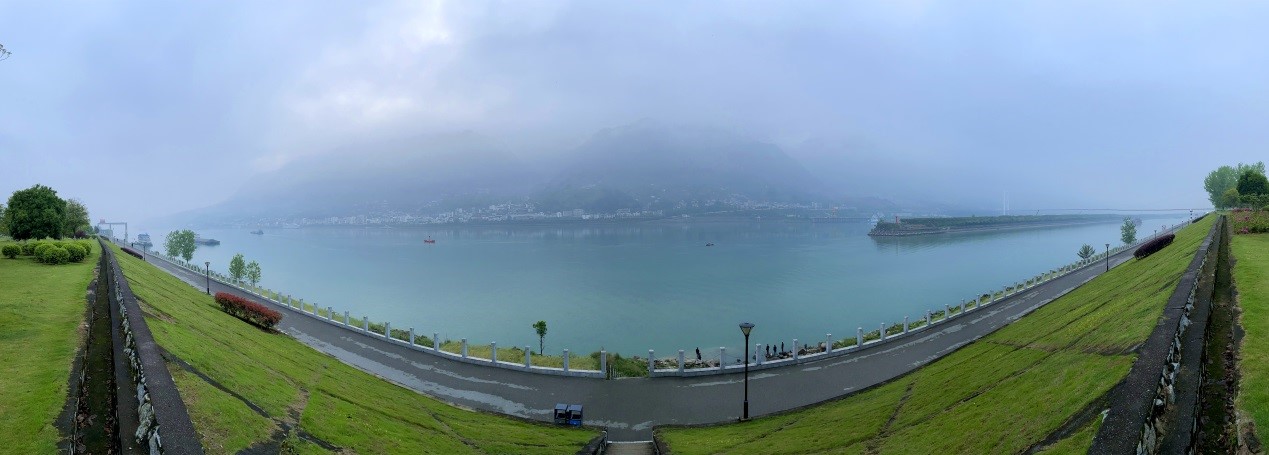The Three Gorges Region (hereinafter referred to as TGR) of the Yangtze River basin is located in the hinterland of China, spanning from Jiangjin District of Chongqing City in the west to Yichang City of Hubei Province in the east. Geographically, it includes the Three Gorges Reservoir and its surrounding areas.
Interannual variations in climatic features in the TGR, especially changes in precipitation, have an important impact on the reservoir’s runoff, the dam’s power generation, and the ecological environment around the reservoir. Therefore, it is crucial to know and understand the basic climatic characteristics of the main weather and climate events in the TGR each year in the long term.
The National Climate Center (hereafter referred to as NCC) of the China Meteorological Administration has compiled a series of annual climate reports focused on the TGR of the Yangtze River since 1996. These mostly unreleased reports aim to provide information on climate monitoring and meteorological disasters by analyzing a range of observed data.
Recently, the NCC team led by Professor Xianyan CHEN wrote a report that provides a detailed description of the major meteorological variables and their anomalies, as well as the main weather and climate events, in the TGR in 2020. The report, which, similar to those for 2018 and 2019 has been published in Atmospheric and Oceanic Science Letters, also analyzes the possible leading causes of the severe rainstorm and flood events that occurred in the summer of that year.
In 2020, the average air temperature in the TGR of the Yangtze River basin was 17.2°C, which was close to normal. Meanwhile, the average precipitation was 1530.8 mm, which was a remarkable 29% more than usual—the second-highest after 1998 since 1961. The precipitation in both June and July, as well as the average number of rainstorm days, were also the second-highest in the same historical period. The major types of meteorological disaster in summer 2020 were rainstorms and floods. For instance, the Yangtze River basin experienced its worst flood since 1998. The rainstorms in the TGR and its surrounding areas were mainly concentrated in June and July, and characterized by heavy precipitation processes, short intervals, high intensity, and wide-ranging impacts.
“The abnormal precipitation in this region was triggered by the frequent convergence of cold air from the north and abundant warm water vapor from the southwest.” Prof. CHEN explains. Starting in the spring of 2020, the continuously high sea surface temperature in the Indian Ocean led to a persistently strong western Pacific subtropical high and its average location being situated more to the south than normal, which might have been an important cause for the abnormal climate conditions in the Yangtze River basin from June to July.
The report also mentions that the TGR of the Yangtze River experienced continuous overcast and rainy weather in spring and autumn, and part of the TGR also experienced relatively low-temperature phases. Meanwhile, in some areas of the TGR in that summer, strong convective weather was more frequent, and high air temperatures were subsequently more obvious. The ecological environment continued to improve, as determined from the annual averages of the six acid rain observation stations in the TGR. These six stations recorded normal rainfall instead of acid rain in 2020, and the rain acidity has also experienced a significant weakening trend in the past decade.
“We will continue to provide climate monitoring facts and analysis in the Three Gorges Region, including causal analysis and impact assessments of extreme climate events,” concludes Prof. CHEN.

Image: Downstream channel of the Three Gorges Dam. Credit: Tong CUI.
Citation:
Cui, T., Chen, X., Zou, X., Zhang, Q., Li, S., Zeng, H., 2021. State of the climate in the Three Gorges Region of the Yangtze River basin in 2020. Atmospheric and Oceanic Science Letters, https://doi.org/10.1016/j.aosl.2021.100112.
|